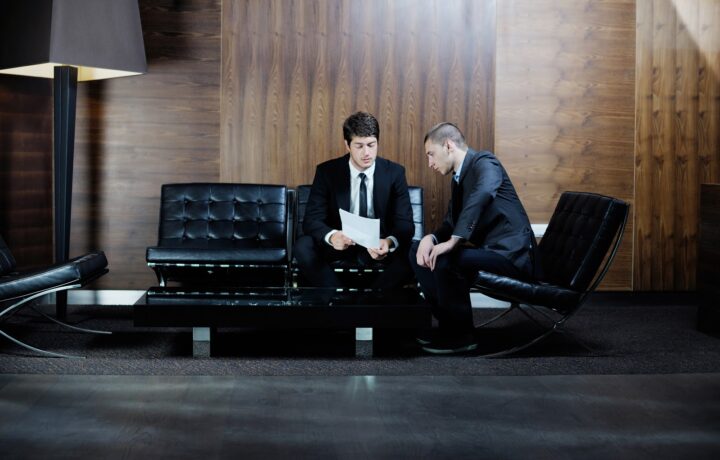3 Case Interview Examples and How to Crack Them Like a Pro

Case interviews are kind of like the boogeyman of the consulting world. Every young (some old as well) consultant or future consultant knows that it’s coming, will spend a significant period of time preparing for it, and despite all will still be quite nervous when the case interview day comes.
It’s okay to be nervous about it, as it will likely be the doorstep to a great job offer for you, especially if you’re aiming high, for companies such as McKinsey, Bain, or BCG. But you need to devote a hefty amount of time to your preparation, go through every possible example you can find, and build up your knowledge and confidence.
Only this way will you be able to suppress your nerves and keep your calm on the interview day.
What Exactly is a Case Interview?
A case interview is the main stage of the selection process in any top-level consulting firm. If you are applying for a job in such a company, be sure that you will have to not only ace but to truly stand out in multiple interviews that the recruiting department has come up with.
These interviews involve testing your problem-solving skills and frameworks, but also the way you approach the problems and how you communicate them. A good way to get a grip on this is to actually check case interview examples here.

What is it Like?
Although they vary a bit between different consultancies, most case interviews have a relatively similar format. In most cases, you will have to complete anywhere between 4 and 6 interviews, split into two rounds. Each interview will usually last between 45 minutes and an hour.
In the starting 20 minutes or so, you will be asked about your traits, your motivation to become a consultant, why do you see yourself as a good fit for the company, and the like.
The second stage is the case interview itself, where you will be given a business problem to solve to prove your problem-solving skills, as well as your knowledge of required frameworks and maths. This usually takes up to 40 minutes.
In the end, there will be a short fit interview again, but this time it is up to you to hand out questions to the interviewer. This is the shortest part of the interview, usually lasting only a few minutes.
Where to Start With Your Preparation?

Well, the greatest way to prepare for a case interview would be to find some case interview examples and start going through them. Fortunately, in this day and age, anything can be found on the internet. So is the case with case interviews.
Any and all case interview examples will prove useful, as you want to look at some from various sources and companies, not just one specifically. However, if you are applying for a job at one of the big names – McKinsey, Bain, BCG, you will be able to find their own examples from their websites to help you prepare.
The more you go through, the better and faster you will start to solve them. Simple as that. Some cases can be approached with existing, generic frameworks, and some will require you to create your own frameworks specifically for that case. When the interview day comes, be sure that you will get a more complicated one where creating your own framework will be necessary.
The point of a case interview is to show that you have outstanding problem-solving skills and that you can adapt to any situation at hand. If they could be solved by anyone who has simply gone through the generic framework patterns, it wouldn’t be much of a challenge now, would it?
Case Interview Examples
Let’s get right into it. Below you will find an example of a case interview from each of the leading names in the consulting industry – McKinsey, Bain, and BCG.
McKinsey Case
This case interview example goes through a profitability problem experienced by the Caledonian Airways company. Here you can look at the case example in a video format.
This being a McKinsey case, it is interviewer-led, meaning that the candidate will be guided through the whole interviewing process by the interviewer. We talked before about generic frameworks and adapting them to the needs of a specific case. In this case, you will find what seems to be a standard profitability problem, but with a lot of nuances that prevent any standard frameworks from being able to handle the case in entirety.
This video covers the whole process of solving the case. The candidate will ask further questions for additional information, develop a MECE structure to break the problem down into smaller chunks, and get to the main cause of the problem.
This video is set up for interactive use. It will highlight when you should pause and think of an answer or an approach for yourself, before looking at how the candidate handled it.
It also includes a mistake from the candidate in the process. Forgetting to add up an element into the equation, which proves to be key in solving it. This serves to show that anyone can make a mistake while working on a case, it’s just the matter of spotting it fast enough and reacting to it.
BCG Case
For this BCG case interview example, we found a good old text format. It is a case of a parent company acquiring another company involved in a similar medical business, that is now looking to increase revenues.
As usual, it starts with establishing an understanding of the situation, followed by additional questions by the candidate to get the necessary info for setting up a framework. Once the required data is gathered, the candidate will evaluate the case by developing his framework and go into details to find a solution.
This text format features two fonts – bold and non-bold. The bolded text represents the candidate’s words, while the non-bold represents the interviewer.

While not strictly interactive, a textual format gives you plenty of options to work on solutions of your own before looking at how the candidate worked on his. Developing your own structure before looking at the done version is always a recommendation.
Bain Case
For Bain’s example, we will share one of their own videos of a case interview. If you want to simply see a video covering the full interview and see how another candidate handles it – you’ll be happy with this.
The case involves a new product that is about to be launched and the company wants to make sure that it will bring a certain amount of profit. This will cause the candidate to evaluate the market, and the product itself, as well as to determine which firms are the best to partner with to provide the optimal results.
The last section of the video is devoted to the evaluation of the interview itself. The interviewer will give her view of how well the candidate handled himself, what his weak and strong points were, and how he approached the whole case.
Final Thoughts
If you’re wondering what format of a case to go with – we would say all of them. Go through all the videos you can find, interactive or non-interactive, go through textual formats. Anything you can find, basically.
You need all the help you can get for this type of interview and hence should not be picking your cases. The more you go through, the better you’ll do when the time comes, and you might just go on to build yourself a career in this profession. Good luck!

